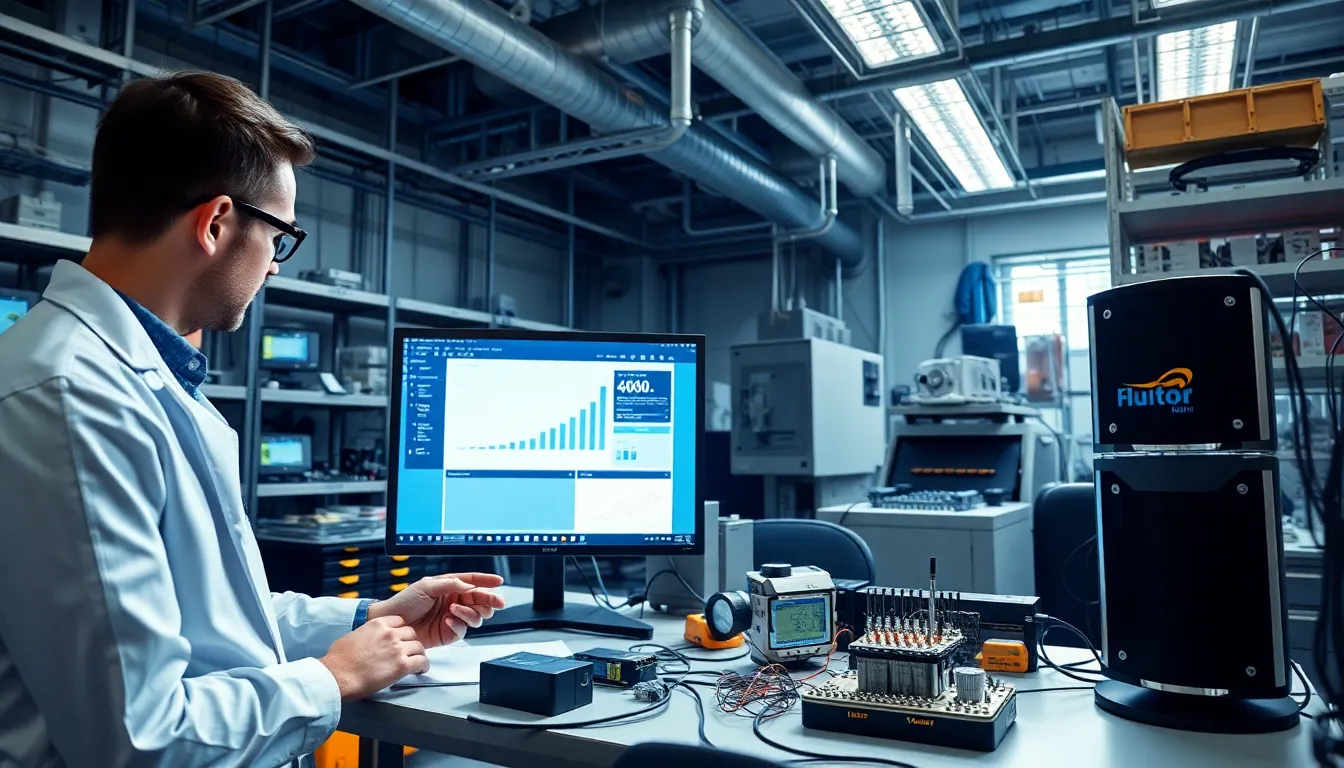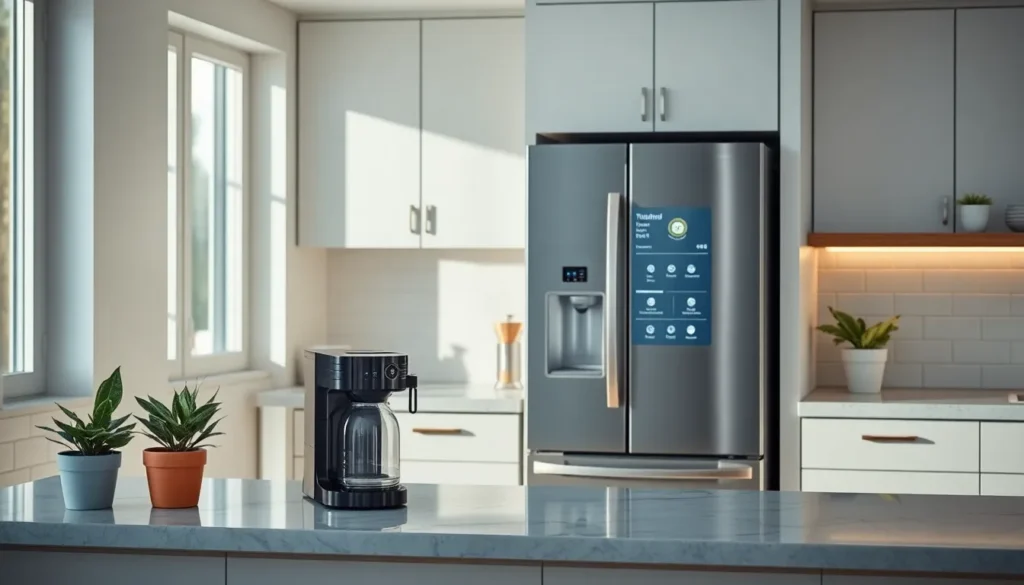Table of Contents
ToggleThe Internet of Things (IoT) isn’t just a buzzword; it’s a revolution that’s turning everyday objects into smart companions. Imagine your fridge reminding you to buy milk while your coffee maker brews your morning cup before you even roll out of bed. Sounds like something out of a sci-fi movie, right? Well, welcome to the future!
Overview Of IOT Innovations
IoT innovations are revolutionizing industries and enhancing everyday life. Smart home appliances streamline daily tasks. For example, a thermostat can learn user preferences and optimize energy consumption. Connected health devices monitor vital signs and transmit data to healthcare providers in real-time.
Industrial IoT applications increase operational efficiency. Sensors on manufacturing equipment provide insights into machine performance, reducing downtime. Agriculture benefits from IoT sensors that monitor soil conditions, leading to better crop yields. Smart cities utilize IoT technologies to manage traffic flow, improving commutes and reducing congestion.
Energy management also sees significant advancements. Smart grids enable efficient energy distribution, integrating renewable resources more effectively. This shift minimizes waste and reduces costs for consumers. Logistics companies apply IoT tracking devices, offering real-time visibility into shipment status, enhancing customer satisfaction.
Retail environments utilize IoT innovations to personalize shopping experiences. Beacons send targeted promotions to customers’ smartphones based on their in-store locations. Inventory management systems minimize stockouts and excess inventory through automated tracking.
IoT innovations extend beyond consumer conveniences. They enhance safety and security as well. Surveillance systems equipped with smart capabilities alert users to suspicious activity instantly. Overall, these advancements demonstrate the vast potential of IoT, bridging the gap between digital and physical worlds.
Key Technologies Driving IOT Innovations

Key technologies play crucial roles in advancing IoT innovations across various industries. Two of the most significant are artificial intelligence and edge computing.
Artificial Intelligence Integration
Artificial intelligence enhances IoT capabilities by enabling data analysis and decision-making. Algorithms process vast amounts of data generated by connected devices, identifying patterns and trends. This capability leads to smarter applications in home automation, healthcare, and manufacturing. AI also empowers predictive maintenance, where systems anticipate failures before they occur, reducing downtime and costs. By combining machine learning with IoT, businesses gain valuable insights, improving efficiency and productivity.
Edge Computing Advances
Edge computing addresses the need for real-time processing by bringing data analysis closer to the source of data generation. This technology reduces latency, as devices can process data locally instead of relying on distant cloud servers. Immediate responses to data inputs enhance performance, especially in critical applications like autonomous vehicles and industrial automation. With IoT devices generating massive data volumes, edge computing optimizes bandwidth usage, lowers costs, and bolsters system resilience. Organizations benefit from localized insights, leading to quicker, informed decision-making.
Applications Of IOT Innovations
IoT innovations find applications across various sectors, enhancing functionality, efficiency, and user experience.
Smart Homes
Smart homes integrate IoT technology to automate everyday tasks. Devices like smart thermostats adjust heating and cooling based on user preferences, optimizing energy consumption. Home security systems utilize IoT cameras and sensors to monitor property and send alerts in real time. Additionally, smart lighting systems offer automated control, allowing residents to create customized atmospheres. Smart appliances, from refrigerators to washing machines, enhance convenience by enabling remote monitoring and operation. These innovations simplify daily life while promoting energy efficiency.
Healthcare Solutions
Healthcare solutions leverage IoT to monitor patient health remotely. Wearable devices track vital signs such as heart rate and blood pressure, providing data to healthcare providers for timely interventions. Telemedicine platforms enhance patient care by connecting individuals with practitioners through IoT-enabled devices. Smart medication dispensers remind patients to take their prescriptions as scheduled, improving adherence to treatment plans. Moreover, real-time patient monitoring systems
allow for quick responses to any health changes during hospital stays. These advancements demonstrate how IoT transforms healthcare, leading to better outcomes and enhanced patient engagement.
Challenges In Implementing IOT Innovations
Implementing IoT innovations presents various challenges that demand careful consideration.
Security Concerns
Security remains a significant issue for IoT deployments. Data breaches can occur if devices and networks are not properly secured. Devices often collect sensitive information, making them attractive targets for cybercriminals. Manufacturers must prioritize robust security measures, including encryption and regular software updates, to mitigate vulnerabilities. Furthermore, as devices connect to the internet, the potential for unauthorized access increases, putting user data at risk. Striking a balance between functionality and security continues to be a critical challenge for many organizations.
Scalability Issues
Scalability poses another challenge for IoT innovations. Expanding an IoT network involves adding new devices while maintaining performance and reliability. This growth often strains existing infrastructure, leading to potential bottlenecks. Companies face difficulties in managing vast amounts of data generated by numerous devices in real-time. Additionally, integrating new devices into current systems can complicate operations. Ensuring seamless communication between devices becomes essential to supporting scalability. Organizations must plan ahead to ensure their infrastructure can accommodate future growth as IoT continues to evolve.
Future Trends In IOT Innovations
Emerging trends in IoT innovations signal significant changes across different industries. Two prominent areas shaping the future involve 5G technology and sustainability initiatives.
5G Impact
5G networks enhance IoT performance, enabling faster data transmission and lower latency. This technology supports a higher density of connected devices, which is crucial for large-scale IoT deployments. Applications such as smart cities and autonomous vehicles benefit from real-time data sharing and processing, improving overall efficiency. Moreover, 5G’s capacity facilitates advancements in remote healthcare, where reliable connectivity allows for continuous monitoring of patients. Industries experience seamless operations through the ability to communicate more effectively and respond promptly to changes.
Sustainability Initiatives
Sustainability initiatives drive the next wave of IoT innovations. Companies integrate IoT solutions to optimize resource consumption and reduce waste. Smart sensors in agriculture monitor soil moisture, leading to precise irrigation and improved crop yields. Businesses also utilize data analytics to enhance energy efficiency, trimming costs while minimizing their environmental impact. Additionally, smart grids facilitate renewable energy management, enabling users to track consumption and promote sustainable practices. As sectors prioritize environmental sustainability, IoT serves as a vital tool for achieving long-term goals.
The potential of IoT innovations is reshaping how individuals and industries interact with technology. As smart devices become more prevalent they’re not just enhancing convenience but also driving efficiency across various sectors. The integration of artificial intelligence and edge computing further amplifies these advancements enabling smarter decision-making and real-time processing.
While challenges like security and scalability exist they’re being addressed through ongoing research and development. As 5G technology rolls out and sustainability initiatives gain momentum the future of IoT looks promising. This evolution will continue to bridge the digital and physical worlds creating smarter homes cities and industries. The journey of IoT is just beginning and its impact will be felt for years to come.







